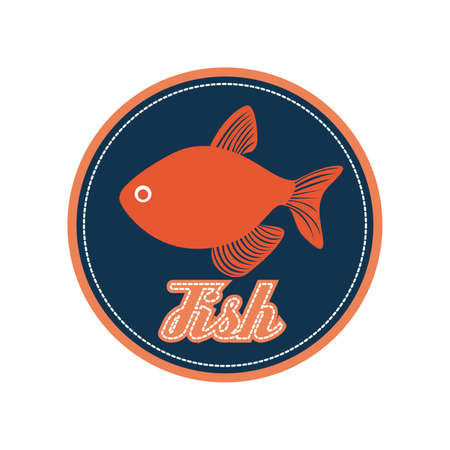1. Understanding the Basics of Fishing Gear
If youre just getting into fishing, building your first tackle box might feel a little overwhelming. But don’t worry — once you understand the basic gear, youll be well on your way to casting like a pro. The key is knowing how rods, reels, and lines work together for different fishing styles. Let’s break it down in a simple way.
Fishing Rods: Your Main Tool
The fishing rod is what youll use to cast your line and reel in your catch. Rods come in different lengths, materials, and strengths depending on where and what you plan to fish for.
Common Rod Types
| Rod Type | Description | Best For |
|---|---|---|
| Spinning Rod | Lightweight and easy to use, great for beginners. | Panfish, trout, bass in freshwater. |
| Baitcasting Rod | Takes practice but offers better control for experienced anglers. | Bass, pike, and larger freshwater species. |
| Fly Rod | Used with fly reels for casting lightweight flies. | Trout and salmon in streams and rivers. |
The Reel: How You Control the Line
The reel holds your fishing line and helps you retrieve it after casting. Just like rods, there are different types of reels suited for different skill levels and fishing situations.
Main Reel Types
| Reel Type | Description | Paired With |
|---|---|---|
| Spinning Reel | User-friendly and versatile; ideal for new anglers. | Spinning rod |
| Baitcasting Reel | Takes time to master but offers accuracy and strength. | Baitcasting rod |
| Fly Reel | Simpler design used mainly for storing line during fly fishing. | Fly rod |
The Line: Connecting You to the Fish
Your fishing line is what links everything together — from your rod and reel to your bait or lure. Different lines have different strengths, stretch levels, and visibility underwater.
Main Line Types
| Line Type | Description | Main Use |
|---|---|---|
| Monofilament (Mono) | Cushiony stretch, affordable, good all-around choice. | Beginners; general freshwater fishing. |
| Braided Line | No stretch, very strong and thin diameter. | Larger fish; heavy cover areas like weeds or rocks. |
| Fluorocarbon | Naturally invisible underwater; low stretch. | Cautious fish; clear water conditions. |
How They All Work Together
A spinning rod pairs with a spinning reel using monofilament line — that’s a great setup for most beginners. As you get more experience, you can explore other combinations depending on where youre fishing (like lakes vs rivers) and what youre targeting (like bass vs trout). Each piece of gear has its role, but they all need to work as a team to help you land that first big catch!
2. Choosing the Right Tackle Box
When youre just getting started with fishing, picking the right tackle box can make a big difference. A good tackle box helps you stay organized, protects your gear, and makes your time on the water more enjoyable. Let’s take a look at the different types of tackle boxes available and how to choose one that fits your needs and budget.
Hard Cases vs. Soft Bags
Tackle boxes come in two main styles: hard cases and soft bags. Each has its own pros and cons, so it’s important to think about how you plan to fish and what kind of gear you’ll be carrying.
| Type | Pros | Cons | Best For |
|---|---|---|---|
| Hard Case | – Durable – Offers great protection – Built-in trays for organization |
– Heavier – Less flexible storage |
Shore anglers, boat fishing, beginners who want a simple setup |
| Soft Bag | – Lightweight – More pockets and compartments – Easier to carry |
– Less protective – Can get wet if not waterproof |
Traveling anglers, kayak fishing, those with lots of gear |
Consider Your Fishing Style
The type of fishing you plan to do will also affect your choice. If youre mostly fishing from a dock or boat, a hard case might suit you best because it stays put and protects your gear well. If youre hiking to remote spots or moving around a lot, a soft bag with shoulder straps could be much easier to carry.
Size and Storage Options
Bigger isn’t always better—especially if you’re just starting out. Look for a tackle box with enough space for the basics: hooks, sinkers, bobbers, lures, and line. Many tackle boxes come with removable trays or adjustable compartments so you can customize your setup as your collection grows.
Quick Tip:
If youre on a tight budget, start small. You can always upgrade later as you gain more experience and gear.
Features to Look For
- Water resistance: Keeps your gear dry in case of rain or splashes.
- Secure latches: Prevents accidental spills during transport.
- Cushioned straps (for soft bags): Makes carrying more comfortable.
- Clear lids or labels: Helps you find what you need faster.
Your tackle box is more than just storage—it’s part of your fishing experience. Choose one that fits your style and keeps things simple while youre learning the ropes.

3. Must-Have Tackle for Beginners
When youre just getting started with fishing, its easy to feel overwhelmed by the wide variety of gear available. But don’t worry—your first tackle box doesn’t need to be complicated. There are a few basic items every beginner should have on hand to get started with confidence. Heres a breakdown of the essential tackle you’ll want to include:
Hooks
You can’t fish without hooks! Start with a small variety of sizes, as different fish require different hook sizes. For most freshwater fishing, sizes 6 through 10 are great for beginners.
Sinkers (Weights)
Sinkers help your bait sink to the right depth. They come in different shapes and weights, but split-shot sinkers are ideal for beginners because they’re easy to attach and adjust.
Bobbers (Floats)
Bobbers keep your bait suspended in the water and let you know when a fish is biting. Round red-and-white plastic bobbers are a classic choice and work well for many types of fishing.
Swivels
Swivels prevent your line from twisting, especially when using spinning lures or live bait that moves a lot. They’re small but super helpful in keeping your line tangle-free.
Basic Artificial Lures
Lures imitate the look and movement of real prey. For beginners, it’s best to start with simple options like soft plastic worms, spinners, or crankbaits. These can attract a wide range of fish and are easy to use.
Quick Tackle Box Checklist
| Item | Recommended Type/Size | Purpose |
|---|---|---|
| Hooks | Sizes 6–10 | Catches fish when they bite |
| Sinkers | Split-shot | Adds weight to cast farther and sink bait |
| Bobbers | Round plastic type | Keeps bait suspended; signals bites |
| Swivels | Small barrel swivels | Prevents line twists |
| Lures | Soft plastics, spinners, crankbaits | Mimics prey to attract fish |
With these basics in your tackle box, youll be ready to hit the water and start learning through experience. Keep it simple at first—you can always add more gear as you grow more comfortable with different techniques and species.
4. Organizing Your Tackle Box
Once youve gathered all the essential gear, its time to organize your tackle box so everything is easy to find and ready to use. A well-organized tackle box saves time on the water and helps prevent tangled lines, lost lures, and damaged gear.
Start with a Clean Layout
Choose a tackle box with adjustable compartments or trays. This way, you can customize the layout to fit your gear. Keep similar items together—hooks with hooks, weights with weights, and so on. This makes it easier to grab what you need without digging around.
Group Items by Category
Divide your fishing gear into categories. Heres a simple way to group your items:
| Category | Items to Include |
|---|---|
| Terminal Tackle | Hooks, sinkers, swivels, bobbers |
| Lures & Baits | Soft plastics, crankbaits, spinners, jigs |
| Tools & Accessories | Pliers, line cutters, hook removers |
| Line & Leaders | Extra fishing line, leader material |
Use Small Containers for Tiny Parts
Tiny items like split shot or small hooks can easily get lost. Use mini containers or pillboxes inside your tackle box to keep them from spilling and mixing with other gear.
Label Compartments if Needed
If youre just starting out or have lots of similar-looking items, labeling compartments can help you find things quickly. Use a permanent marker or small stickers for clear labels.
Keep Frequently Used Items Accessible
Store your go-to gear in the top tray or front compartments for quick access. This could include your favorite lures, pliers, or pre-rigged setups.
Protect Your Gear from Moisture
Add a few silica gel packs to absorb moisture and reduce rust. Always dry off wet gear before putting it back in the box.
Quick Tips for an Organized Tackle Box:
- Reorganize after each trip—put everything back in its place.
- Avoid overpacking; too much gear can lead to clutter.
- Use foam pads or dividers for sharp hooks to avoid tangles.
- Check supplies regularly and restock as needed.
A little time spent organizing your tackle box means more time fishing and less time fumbling around when youre on the water.
5. Safety and Maintenance Tips
When youre just starting out with fishing, its easy to focus on lures and reels—but safety and maintenance are just as important. A well-kept tackle box not only lasts longer but also keeps you safe on the water. Let’s break down how to handle your gear safely and keep it in top shape.
Hook and Tool Safety
Fishing hooks are sharp for a reason—they need to pierce through water and fish. But that also means they can hurt you if youre not careful. Here are some tips to help you stay safe:
| Item | Safety Tip |
|---|---|
| Hooks | Always handle hooks by the shank, not the point. Use pliers when attaching or removing them from lines or fish. |
| Pliers | Choose needle-nose pliers with a good grip. Keep them clean to avoid slipping during use. |
| Knives | Use a sheath and keep blades sharp—dull knives are more dangerous because they require more force. |
| Tackle Box | Store sharp items in separate compartments or small containers with lids to prevent accidental pricks. |
Tackle Maintenance
Your tackle will last much longer if you take care of it after each trip. Moisture, dirt, and saltwater can all lead to rust and damage over time. Heres how to keep everything in great condition:
- Dry Everything: After fishing, lay your gear out on a towel and let it dry completely before storing it back in the box.
- Clean Your Lures: Wipe down plastic and metal lures with a damp cloth, especially after saltwater use.
- Check for Rust: Inspect hooks, swivels, and split rings regularly. Replace anything showing signs of corrosion.
- Tidy Up: Keep your tackle box organized so you can quickly find what you need—and avoid getting poked accidentally.
Tackle Cleaning Checklist
| Tackle Type | Cleaning Method |
|---|---|
| Lures | Damp cloth wipe-down, remove any weeds or debris |
| Hooks | Dab with rubbing alcohol or rinse with fresh water, dry thoroughly |
| Pliers/Tools | Cleansing wipe or soapy water, apply light oil to hinges if needed |
A Few More Tips:
- Add silica gel packets inside your tackle box to absorb moisture.
- If your box gets wet, empty it completely and let it air-dry before restocking.
A little care goes a long way—keeping your gear clean and yourself safe makes every fishing trip more enjoyable!


